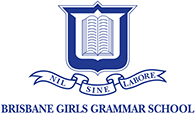At the Remembrance Day and Prize Reading Assembly last week, Mrs Narelle Waverley-Smith, Head of Study of Religion, delivered the following Remembrance Day address.
Here we are in 2015, entering into a ritual that emerged in the aftermath of the ‘war to end all wars’, the world’s first international conflict that caused destruction on a scale unknown in human history. In the year following the Armistice of 1918, we find this account in the Manchester Guardian describing the first time the two minute silence was observed. And it reads,
The first stroke of eleven produced a magical effect.
The tram cars glided into stillness, motors ceased to cough and fume, and stopped dead, and the mighty-limbed dray horses hunched back upon their loads and stopped also, seeming to do it of their own volition.
Someone took off his hat, and with a nervous hesitancy the rest of the men bowed their heads also. Here and there an old soldier could be detected slipping unconsciously into the posture of ‘attention’. An elderly woman, not far away, wiped her eyes, and the man beside her looked white and stern. Everyone stood very still … The hush deepened. It had spread over the whole city and become so pronounced as to impress one with a sense of audibility. It was a silence which was almost pain … And the spirit of memory brooded over it all.
We as a school community stop in silent reflection, just as we have done for almost 100 years. The silence we offer echoes that which fell over the battlefield at 11.00 am on the eleventh day of the eleventh month in 1918 when the Armistice was signed to end World War I. We respect this ritual every year, because we need to be reminded. Reminded of our history, and of those who gave their lives or otherwise suffered in wars and conflicts.
Since the outbreak of World War I, over 100 000 Australian Defence Force servicemen and women have given their lives to our nation’s cause. Many of those people remain where they fell on foreign shores – never to return to their homeland. Never to return to their families. The only way we can respond to such a shocking truth is in silence for words literally fail us.
Among the many battles fought in World War I, there is one that demonstrates the cataclysm that was the Western Front.
As our Year 9 students know, the tiny country of Belgium was the focus of intense conflict due to its position in Europe. In particular, some of the most devastating battles erupted near Ypres.
In 1917 our Australian troops joined the British in what became known as the Third Battle of Ypres. The soldiers who fought called it the Battle of Mud, for the conditions were horrendous.
It just over a week, 11 000 of our finest young Australian men became causalities of war.
The fighting continued until the last shell fell on Ypres on 14 October 1918. In this area alone, over 1 700 000 soldiers from both sides were killed or wounded as well as a countless number of civilians.
These numbers are impossible to absorb.
How are we to respond?
Across Australia and overseas we have built memorials to honour the men and women who served in the various wars. These strong and enduring structures keep the memory of loved ones alive and remind us of lives taken by war.
As a nation, and as a school, we traipse off to obscure places in distant shores to lay wreaths to declare that we won’t forget the fallen.
One such place is Gallipoli. Earlier this year a group of our students and teachers made the pilgrimage to the War Memorials in Turkey to pay homage to those who served there.
Closer to Australian shores, at the end of last year our Year 12 Antipodeans travelled to Borneo and visited the Kundasang War Memorial, a monument built to commemorate British and Australian prisoners of war who endured unimaginable hardship in World War II.
Kundasang is a patch of jungle, otherwise unremarkable, except that it has become forever a place of sacred significance to Australians. This is the place where, out of the 2 428 soldiers who were imprisoned, all the British soldiers died and only six Australians survived the horrors of the prisoners of war camps and the death marches.
When we visit monuments of memory, what are we actually doing?
We are making a connection, whether that be with dear family members or simply fellow Australians.
We choose to connect and remember that those who have returned from war with broken bodies, disturbed minds and those who did not come home, were, and are, just like you and I, made of flesh and blood, full of hopes and dreams. In sharing their stories, we make them present.
When we open ourselves to stories, mostly tragic, but sometimes triumphant; if we are ready to be changed by what we hear, something happens, we are transformed – for the stories are opening us to our humanity.
So here we are today, participating as a group in our own ritual for Remembrance Day. Ritual is an expression, an acting out of what we believe, of how we see ourselves. We believe that those who served our nation, mattered, and that they continue to matter.
